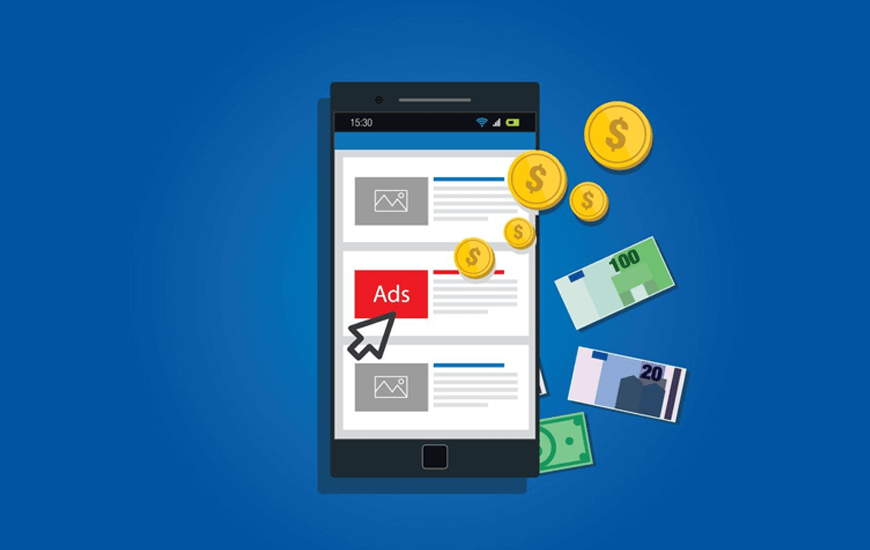As an app developer, your groundbreaking ideas and coding skills are just one crucial piece. To build a sustainable business, you need to master the art and science of Monetize Your App.
Implementing the right revenue models and monetization tactics is vital for profitability. This allows you to deliver an engaging user experience while earning ongoing income from your mobile apps.
In this guide, we’ll explore proven techniques for monetizing mobile apps to drive recurring profits.
1. Charging Upfront App Purchase Fees
The most straightforward monetization model is charging a one-time upfront fee to download your app from the App Store or Google Play. This earns revenue directly from users.
The upside is immediate earnings. However, any cost creates friction and limits user base size. Ensure your app delivers robust ongoing value worth a paid fee. Offer free trial periods to spur conversions.
2. Implementing In-App Purchases
Rather than an upfront cost, you can offer your app for free and then charge for access to additional features or content via in-app purchases. This removes initial barriers to usage while catering to super users.
Elements like virtual currencies, bonus game levels, ad removal, customizations, advanced features, and more can be unlocked through in-app transactions using Apple Pay or Google Pay.
3. Displaying Interstitial and Banner Ads
Showing paid ads within your app provides continuous passive revenue through impressions and clicks.
Banner ads stay on the screen while users view content. Interstitial ads display between screens or activities.
Minimize disruption by limiting ads to natural breaks in the user flow. Ad frequency caps prevent oversaturation, and disabling after in-app purchases retains a premium feel and may lift conversions.
4. Enabling Rewarded Video and Offer Wall Ads
Rewarded video ads and offer wall ads reward users for choosing to engage with branded content or promotions – such as watching a short video, signing up for a newsletter, or taking a survey. They then receive incentives like virtual currency or unlocking premium app features. This exchange increases ad interaction while monetizing through a revenue share model with advertisers.
5. Utilizing Native Ads for Visual Appeal
Native ads seamlessly match the form and function of your app’s layout.
For example, an ad formatted to look like a user post within a social app feed. This preserves the user experience while still Monetize Your App inventory.
Native ads appear less disruptive than banner ads. However, viewers may not recognize them as ads, raising transparency issues to consider.
6. Leveraging Three-Dimensional Augmented Reality Ads
As consumers use more AR-enabled apps, brands want to reach them through immersive ads. Platforms like Snap allow embedding sponsored AR objects into real-world camera views.
For apps with an AR focus, 3D AR ads provide revenue potential through a highly engaging ad experience. However, AR ads remain a newer format with technical considerations.
7. Building a Subscriber SaaS Model
Rather than one-off purchases, you can monetize your app through ongoing subscription access to your app. Users pay a recurring monthly or annual fee to use the app and receive updates.
This creates predictable recurring revenue. But you must continually add value through new features, content, and improvements to retain subscribers. Offer premium tiers for expanded capabilities.
8. Developing Paid API Access
Expose data or functionality from your app through paid API access. For example, charge other apps to access your app’s database via API calls. Or offer an API for leveraging your app’s proprietary algorithms or AI.
APIs create new monetization verticals beyond your user base. But ensure your app has unique value worth paying for API access. Set pricing tiers based on usage levels.
9. Building White Label Solutions
Instead of direct-to-consumer, build an app as a white-label software solution. This allows other businesses to license your app, customize it with their branding, and deploy it for their own customers.
You earn ongoing B2B revenue from app licensing and features fees. However, sales cycles for businesses are longer. Provide sufficient customization capabilities.
10. Selling Merchandise
Many apps build loyal fandoms around characters, brands, or causes. Capitalize by selling branded physical merchandise like apparel, accessories, toys, home goods, and more.
Promote merchandise through in-app marketing and your website store. Margin revenue from e-commerce sales passively monetizes your audience’s affinity. Partner with a print-on-demand service to minimize risk.
Read More- Programmatic Advertising Strategies for Dominance in 2023 and Beyond

